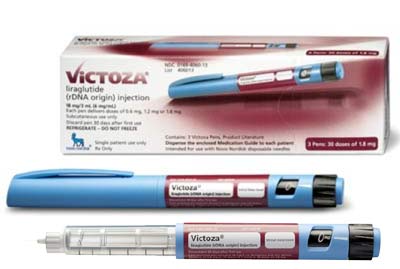
|
|
||||
|
GLP-1 is a naturally occurring hormone that functions to maintain blood glucose levels by increasing insulin production in the pancreas, decreasing the release of glucagon (a hormone which controls the release of glucose from the liver after meals), promoting a feeling of fullness after eating a meal and slowing the emptying of the stomach’s contents to allow more time for food absorption. GLP-1 is deficient in persons with diabetes. Liraglutide is a long-lasting GLP-1 analogue that is 97% homologous to native GLP-1. Unlike naturally occurring GLP-1, which is rapidly inactivated in the body by an enzyme called DPP-4, the slight structural change of liraglutide makes it resistant to degradation by DPP-4. Liraglutide injections improve blood glucose levels by enabling persons with diabetes to achieve high levels of GLP-1 for several hours after administration. Liraglutide acts in a glucose-dependent manner, meaning that it stimulates insulin secretion and inhibits secretion of glucagon only when blood glucose levels are higher than normal. Liraglutide therefore has a low risk of hypoglycemia.
Victoza is used, in addition to diet and exercise, to improve glycemic control in persons with type 2 diabetes. It may be administered in combination therapy with metformin and/or sulfonylureas.  Dosage Forms and Strengths Victoza is a clear, colourless solution intended for subcutaneous injection. Victoza comes in a pre-filled, multidose pen that delivers 0.6mg, 1.2mg or 1.8mg of liraglutide (6mg/mL, 3mL per pen). Dosage and Administration
Side effects
Victoza has been found to have a low risk of hypoglycemia, however this risk is higher when Victoza is taken with other medications that cause low blood sugar, such as sulfonylureas. Victoza is not associated with weight gain. Ingredients Active ingredient: Liraglutide Inactive ingredients: Disodium phosphate dehydrate, propylene glycol, phenol, water | ||||